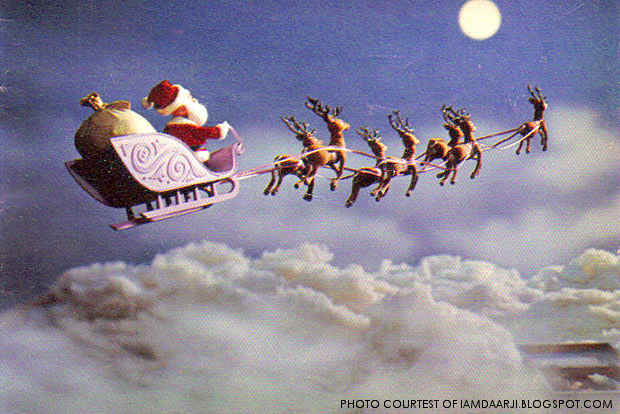

He’s had the chest pains for weeks,
but doctors don’t make house
calls to the North Pole …
There comes a time in every child’s life when his parents reveal the ugly truth: the nonexistence of Santa Claus. The poem “The Death of Santa Claus” by Charles Harper Webb illustrates the situation perfectly. The poem begins with an 8 year old detailing Santa’s death. Santa starts suffering various ailments, such as chest pains and indigestion, until he has a heart attack and “the beautiful white/ world he loves goes black”.
The poem ends with the child’s mother starting to tell him that Santa isn’t real, with “ tears/ in her throat, the terrible/ news rising in her eyes.” This ending signifies the changing relationships between parent and son.
The Santa myth serves as a connection between parents and kids. It allows people of different ages to have this common bond, this link–something for both of them to believe in. And when the myth of Santa is changed for the child, the relationship between parent and child changes as well. In the poem, the author Harper doesn’t mention his eight year old self crying after hearing the news; rather, he mentions his mother crying. The mom is sad because her relationship with her son is changing–he’s growing up.
Many believe that the lying about the existence of Santa causes detrimental problems to children. One website claims that the Santa lie leads to “poor sleep”, “aggressive behavior or out-of-control behavior” and “manipulative and unethical” parenting. But it seems that breaking the myth of Santa to children is, in a way, much harder on the parents than the children. Kids are naturally resilient and adaptable. For example, when a child falls and scrapes his knee, he gets up and walks away while the parent sprints over with band aids. It’s the same way with the Santa story. Kids walk away, a little disappointed but somewhat unfazed, while the parent is the one who is upset. Stories are a link between two different parties, and when the story changes, so does the relationship. The relationship between parent and child shifts and matures, and from then on is never quite the same.
It is not that the parent-child relationship is destroyed, or that the child will never believe anything else the parent says. In fact, it’s actually good for kids to believe in Santa. Studies show that fantasy or imaginary play–which includes believing in Santa–leads to children with greater social understanding, who are good at understanding others’ perspectives, reports an article in the Wall Street Journal. That doesn’t mean that telling kids about Santa doesn’t come with its consequences.
So, yes, while the relationship between parent and child changes, it is not over. The relationship is simply maturing.